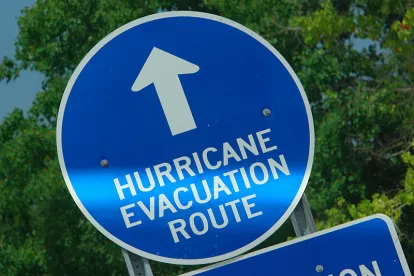As Texas and Louisiana brace for Hurricane Laura to make landfall, policyholders in the affected regions should be making last minute preparations to ensure their properties are covered in the storm’s wake.
Hurricane Laura is expected to make landfall as a Category 4 storm tonight, or early Thursday morning between Houston, Texas and Lake Charles, Louisiana. With wind speeds reaching over 120 mph, Laura has the potential for catastrophic damage to life and property and long-term disruption of normal business operations. The following three steps are crucial to ensuring that you protect your property and business and maximize insurance proceeds should your property fall in the path of this storm:
-
Locate a copy of your policy.
Having your policy on hand prior to a loss will aid in starting your claim as soon as possible, as it may be more difficult to get in touch with your broker following a storm where thousands of claims are taking place simultaneously.
Your policy will also provide you with important information regarding how to get in touch with your insurer following a loss.
While it is too late to alter your coverages at this point, knowing your rights and duties for the period immediately following the storm will aid in the claim process.
-
Have an insurance response team prior to the storm.
Commercial policyholders should know now who they are going to contact for emergency repairs and services. Having an emergency action plan in place will minimize downtime and maximize recovery efforts after the storm.
Document or photograph your pre-loss inventory and other insured assets to provide to your insurer when adjusting your claim. They may not be able to reach your property immediately following the storm.
Following the storm, your team should set up a general ledger to capture all storm-related costs, expenses, and time, including costs incurred to mitigate storm losses.
Designate a point person to liaise with the insurer’s adjuster and to submit storm-related invoices, quotes and contracts.
Document everything, including physical damage, evacuation orders, curfews, power outages, supply chain disruptions, and extra costs.
-
Present your claim as soon as practicable.
Insurance companies require prompt notice of a loss. Once the claim is submitted, check your policy regarding the submission of a proof of loss, as is often required. These documents have deadlines, some of which are triggered without any request from the insurer. Request an extension if you need one to ensure timely submission. Use photographs, videos, or other documentation to substantiate your claim.
Keep a log of all communications with your insurer and adjuster, including phone calls. An accurate timeline of communications will assist in any potential litigation regarding your claim.
In the event of a denial, delay, or recovery smaller than required to repair your business, retaining experienced coverage counsel can help you in analyzing your policies, and understanding your rights and the obligations of your insurer.
For more information regarding insurance recovery for hurricane losses, see our July 2020 client alert.
Meagan R. Cyrus contributed to this article.






 />i
/>i
